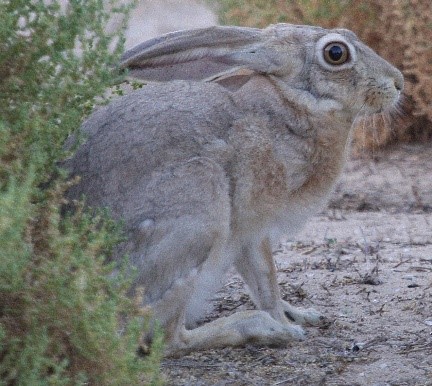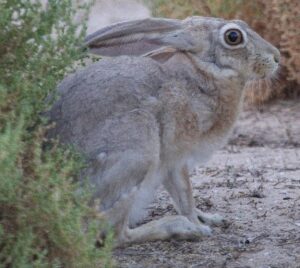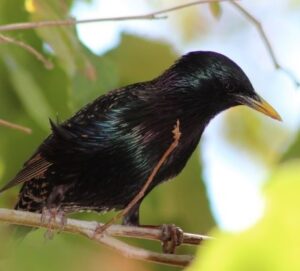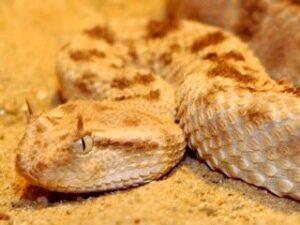Rabbits
Wild Rabbit
General Description

Credit: Haplochromis, animalia.bio |
Credit: Shah Jahan |
- The Cape hare has a fine, soft coat that varies in color from light brown to reddish to sandy grey.
- The female is larger than the male, an example of sexual dimorphism.
- It has well-developed legs for leaping and running.
- It has large eyes and ears to look for threats from its environment. A white ring surrounds the eye.
Life Cycle and Common Characteristics
- After a 42-day-long pregnancy, the female gives birth to from 1 to 3 young (called leverets) per litter and may have 4 litters per year.
- Breeding occurs from January to June, with young produced from March to October. Breeding my occur at intervals of three months.
- The young hares are born with eyes open and are able to move about shortly after birth.
- It is a nocturnalherbivore, feeding on grass and various shrubs.
- It consumes its own fecal material to double the amount of time food spends in the digestive tract (Coprophagy). With this behavior, the rabbit extracts the maximum nourishment from its diet, and microbes present in the pellets also provide nutrients.
- Hares rarely live more than one year in the wild, and few individuals may live up to 5 years.
- Range generation period from 38 to 41 days.
- Range age at sexual or reproductive maturity is 7 to 9 months for both sexes.
Damages and Medical Implication
- Rabbits can cause damage throughout the year, depending on what plants are available. They eat succulent green vegetation, such as flowers, vegetables, and crops, during the growing season, and they may turn to trees or shrubs in winter.
- Rabbits can severely damage landscape plants, orchard trees, and other woody plants. They commonly bite off small branches and gnaw to reach the green inner bark.





